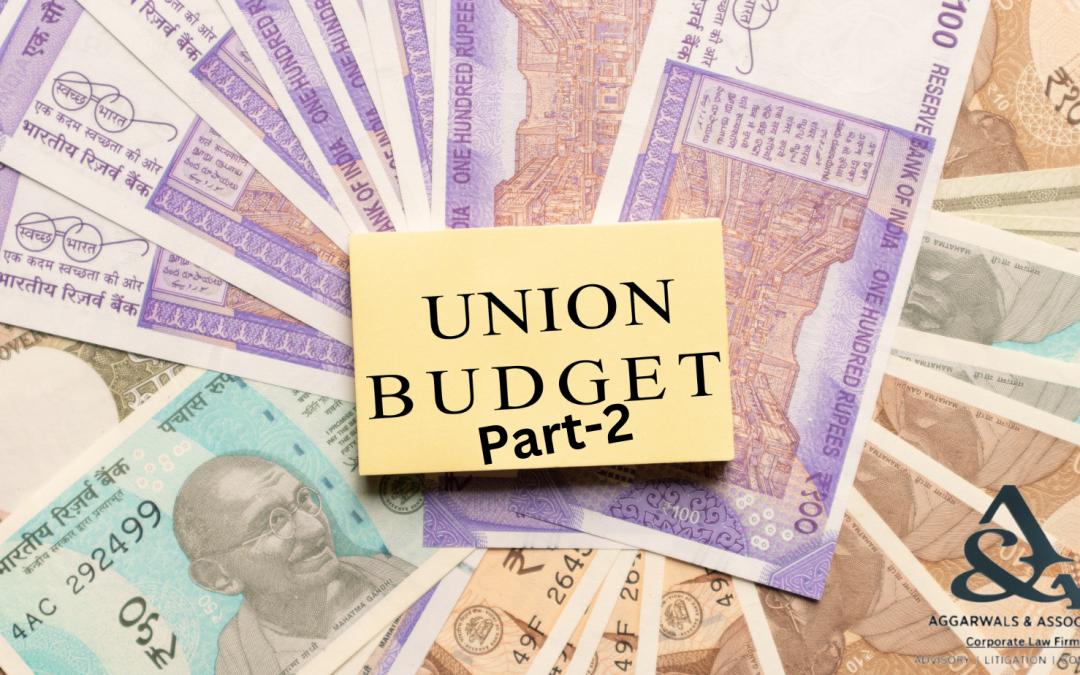
by Aggarwals Associates | Feb 7, 2023 | RERA- Real Estate
What is RERA?
RERA stands for Real Estate Regulation and Development Act, (hereinafter referred to as Act) a law passed by the Indian government in 2016, aimed at regulating and promoting the Indian real estate sector by protecting the interests of consumers and boosting investment in the industry. The Act ensures transparency of work and for the upliftment of the real estate industry with time.
What are the benefits of RERA?
- Consumer protection:
RERA ensures that the interests of consumers are protected by setting clear guidelines for fair and transparent real estate transactions. The act mandates that developers must complete projects within a specified timeline and imposes penalties for delays. If the buyer finds that the tile is not correct even after the possession then also the buyer can claim the compensation from builder.
- Transparency in pricing and approvals:
Developers are required to disclose all information about a project, including pricing and approvals, to potential buyers. By creating a more transparent and regulated real estate sector, RERA aims to increase investment in the industry, leading to more housing options and job creation. Before the Act, the amount calculated was never fixed. The builder always used to give different prices for same flats / property. But, now cause of the RERA authority’s defined carpet area, the price is fixed for all the same carpet areas. RERA provides a platform for a single-window clearance system, making it easier for developers to obtain the necessary approvals and permits.
The Act defines carpet area as follows: “carpet area” means the net usable floor area of an apartment, excluding the area covered by the external walls, areas under services shafts, exclusive balcony or verandah area and exclusive open terrace area, but includes the area covered by the internal partition walls of the apartment.
- Dispute resolution mechanism:
The act provides a fast-track dispute resolution mechanism to resolve any disputes between developers, buyers, and other stakeholders in a timely and cost-effective manner. The dispute can be resolved by following ADR (Alternative dispute resolution) mechanism i.e., Arbitration, mediation and conciliation. The ADR mechanism is a cost-effective and easy procedure to resolve disputes among parties.
- Rate of interest same:
If the buyer has not completed the payment on time or the builder has not completed the building then both buyer and builder are liable to pay the same rate of interest to the Authority.
- Grievance Redressal:
The buyer, promoter or agent has any issues with respect to the project then they can file a case in the RERA authority and still if they are not satisfied with the RERA order they can go to Appellate Tribunals. No civil court of the jurisdiction has the right to hear the case only the Appellate Tribunals can only do so.
What is the objective of establishing the RERA Authority?
- Protect the interests of consumers in the real estate sector by setting clear guidelines for fair and transparent real estate transactions.
- Promote the growth of the real estate sector by boosting investment and increasing the supply of housing.
- Ensure timely delivery of real estate projects by mandating that developers complete projects within a specified timeline and imposing penalties for delays.
- Enhance transparency in the real estate sector by requiring developers to disclose all information about a project, including pricing and approvals, to potential buyers.
- Provide a fast-track dispute resolution mechanism to resolve disputes between developers, buyers, and other stakeholders in a timely and cost-effective manner.
- Regulate the unorganised sector of real estate by bringing in a higher degree of accountability and professionalism.
- Enhance consumer confidence in the real estate sector by establishing a regulatory framework that promotes transparency, accountability, and fairness.
Surbhi Singla
Associate at Aggarwals & Associates, S.A.S Nagar Mohali.

by Aggarwals Associates | Feb 2, 2023 | General
- PAN Card as a common identifier: PAN Card is to be identified as a common identifier for all digi-system as specified in government agencies.
- MSME:
- Revamped credit guarantee to all the MSMEs that will be applicable from April 1, 2023, with 9000 Crores in the corpus.
- Collateral-free credit of 2 lakh crore to the companies registered under MSME.
- Cost of credit is decreased by about 1 per cent for the companies registered under MSME.
- Employment or Job: Schemes have been launched for employment generation.
- Pradhan Mantri Kausal Vikas Yojana 4.0
- 30 Skill India International Centres will be set up across different states. The centre is established for the skill enhancement of youth for International opportunities.
- Green Hydrogen Mission: The amount of 19700 crores is granted to the National Green Hydrogen Mission. The mission aims to reach 5 million tonnes in hydrogen production capacity by 2030.
- Defence: The budget for the defence department is increased by 5.94 lakhs from 5.25 lakhs. Moreover, 1.62 lakhs crore is granted for the capital expenditure for the purchase of weapons or other essential purchases. The budget for border road organisation is increased by 5000 Crore, whereas Indian Air Force is alloted with 57,137.09 Crore, Indian navy with 52,804 crore , Army with 37,241 crore and the outlay of 23,264 is granted to the defence research development organisation
- Railway: The total outlay of 2.4 lakh crore is granted for boosting affordable regional connectivity and logistics of cargo freights.
- 157 new Nursing colleges have to be established in the core areas.
- National Digital Library for children and adolescents.
- 3 centres for excellence of AI (Artifical Intelligence). The objectives of establishing these centres are to make AI for India and to make AI work for India.
- 100 labs for developing apps using 5G services.
- The outlay of 7000 crores for Phase- 3 e courts
- Central Processing centre is established for ensuring faster response in a company filing.
- Capital Investment: The outlay of 10 crores to capital investment for job creation and crowd in private investment.
- Aviation: Fifty additional airports, helipads, water air drones, and advanced landing grounds have to be established in the upcoming years for the upliftment purpose.
Surbhi Singla
Associate at Aggarwals & Associates, S.A.S Nagar, Mohali

by Aggarwals Associates | Feb 2, 2023 | General
The union budget is presented by the Finance Minster every year on the 1st of February. The budget is presented on the 1st of February to materialise all the necessary things from the new financial year. The union budget is presented by Nirmala Sitharaman in 2023 in virtual mode (Bhahi Khata) form.
The key highlights or crux from union budget 2023 are as follows:
- Schemes and extensions in the budget: Various schemes are launched and in some schemes, the validity and investments are increased.
- The deposit for the monthly income scheme is doubled to 9 lakhs and 15 lakhs in the case of the joint account.
- Mahilla Samman Saving Scheme: The scheme is launched for the upliftment of women and girls in society. According to the scheme, an amount of up to 2 lakhs can be invested in the name of women or girls for the period of 2 years. The interest rate for which is 7.5 per cent and also the partial withdrawal is available for the users.
- Senior Citizen Saving Scheme: The investment limit for the scheme has been increased to 30 lakhs from 15 lakhs.
- Dekho Apna Desh Initiative: The initiative aims to establish 50 new desti unit malls in the state for the promotion of tourism.
- PM Awas Yojana: The budget for this yojana is enhanced by 66% to over 79000 Crore.
- Vivad se Vishwas 2 Scheme- The scheme is launched for easy settlement of commercial disputes bet
- New Tax slab: According to the new tax regime there is a rebate in tax for income up to 7 lahks. In simpler terms, taxpayers whose annual income is up to 7 lakhs are exempted from tax.
- The new tax slabs are as follows:
Up to 3 lakh- 0% tax
3-6 lakhs- 5% tax
6-9 lakhs- 10% tax
9-12 lakhs- 15% tax
12-15 lakhs- 20% tax
More than 15 lakhs – 30% tax
Standard deductions for salaried and individual taxpayers.
The surcharge rate reduced from 37% to 25%.
No exemption on proceeds of insurance policies with premiums more than Rs. 5 lakhs.





Recent Comments